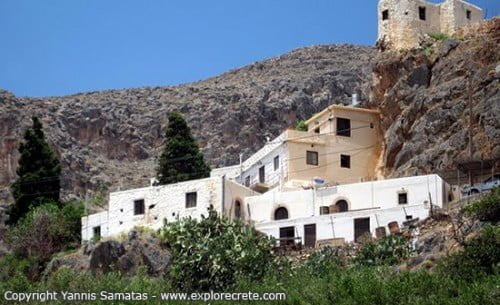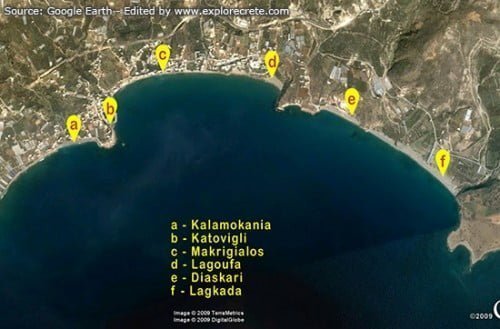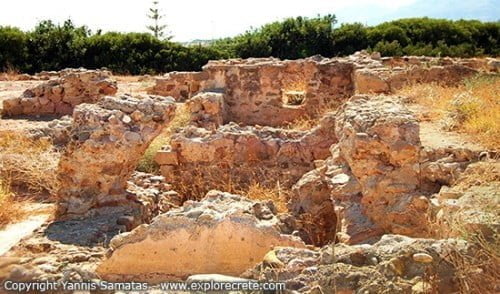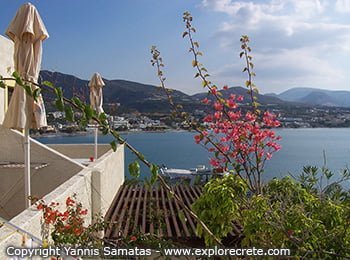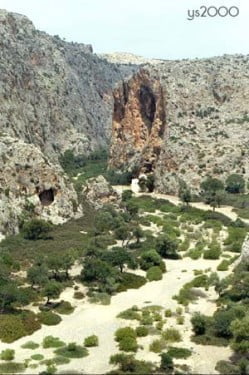Pefki Gorge in Crete
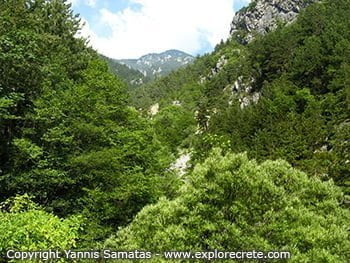
Pefki Gorge is a small gorge in southeast Crete. Pefki Gorge runs down from Pefki village to Makry Gialos. It’s a pretty gorge, full of the scent of pine accompanying your every step.
The gorge is 7 kilometres long, and if you feel more athletic you can walk up it the other way, from Μakry Gialos to Pefki village.
Walking in Pefki Gorge
If you take a walk through Pefki village and Pefki Gorge, you will see that, apart from pine trees (pefka in Greek), the earth is blanketed in kermes oak, lentisc, olive and carob trees, while the villagers’ greenhouses are luckily located further south, in the plain of Makry Gialos and Goudouras.
Starting from Pefki, you pass through the olive groves to Ilias’s Watermill, one of the oldest watermills still standing, which functioned until the early 1920s. Right after the watermill is the entrance to Pefki Gorge, whose walls reach a maximum height of 120 metres.
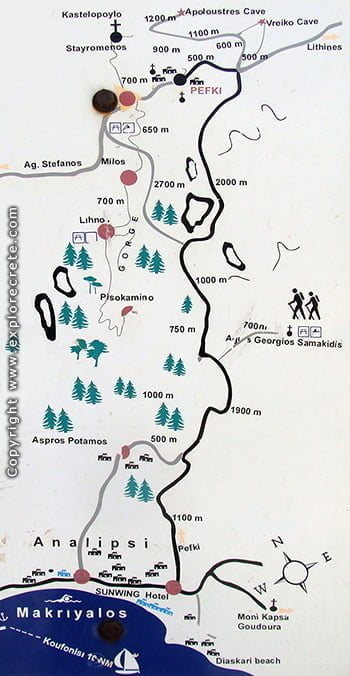
The walk down the gorge is along a pretty and picturesque route through the pine wood. You will also see plane trees and other common Cretan vegetation, such as thyme and sage bushes. On the south side of the gorge is a spring of fresh drinking water, so it’s a good idea to fill a bottle with cold mountain water to take with you.
There have been a few minor human interventions in the gorge, so don’t be surprised to see a wide footpath and stone benches at some points. Luckily these features have not spoilt the scenery and character of the gorge, as they have been realised as part of the European Leader Programme.
On leaving Pefki Gorge you come to Pisokamino, and 500 m further down is the village Aspros Potamos, where there is a huge rock, the “Volakas tou Sarakinou” (“Saracen’s Rock”). Legend has it that a Saracen pirate left behind in a raid hid there to escape the Cretans hunting him.
On the rock you will notice small, egg-sized pebbles. This has given rise to various stories and theories. The commonest tale is that, during the wars, the locals suffered much hunger and hardship. So the children played a game: every time they passed the rock, they would toss a pebble onto it.
If the pebble rolled off the rock, there probably wouldn’t be any food at home. If it stayed on the rock, there would be warm, nourishing food waiting for them. This is supposedly how the pebbles got on the Volakas.
A short distance from the Saracen’s Rock is the village of Aspros Potamos (“White River”), where the tarmac road either leads back to Pefki village or continues on to Μakry Gialos.
- Read more about Pefki village
© explorecrete.com All Rights Reserved. Reproduction or copying without permission is prohibited.

